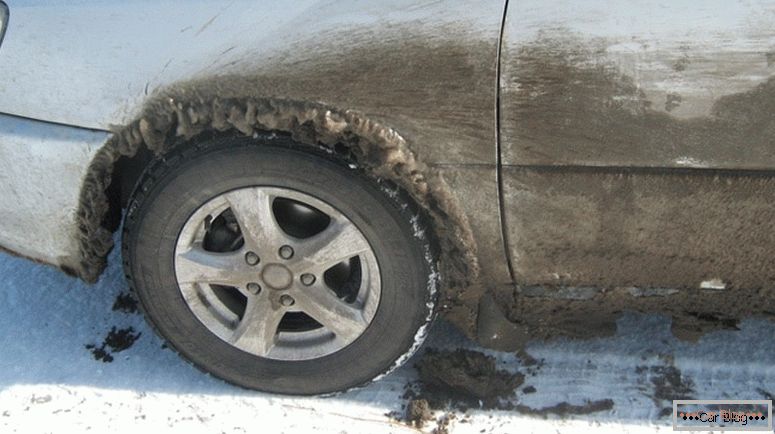>
Bearings, invented more than a hundred years ago, have become an indispensable part in any rotating mechanism - they can significantly reduce friction compared with their counterparts, and also provide reliable support for individual components. The car also uses a lot of bearings - among them it is necessary to note the details in the engine and transmission, as well as in the wheel hubs. The latter are usually given the least attention, considering them to be practically “eternal”. However, it is better to refuse such an approach, since a wheel bearing jammed at high speed can cause a serious accident. To avoid such problems and ensure the reliability of the undercarriage of the car, you should know which lubricant for the hub bearings is better.
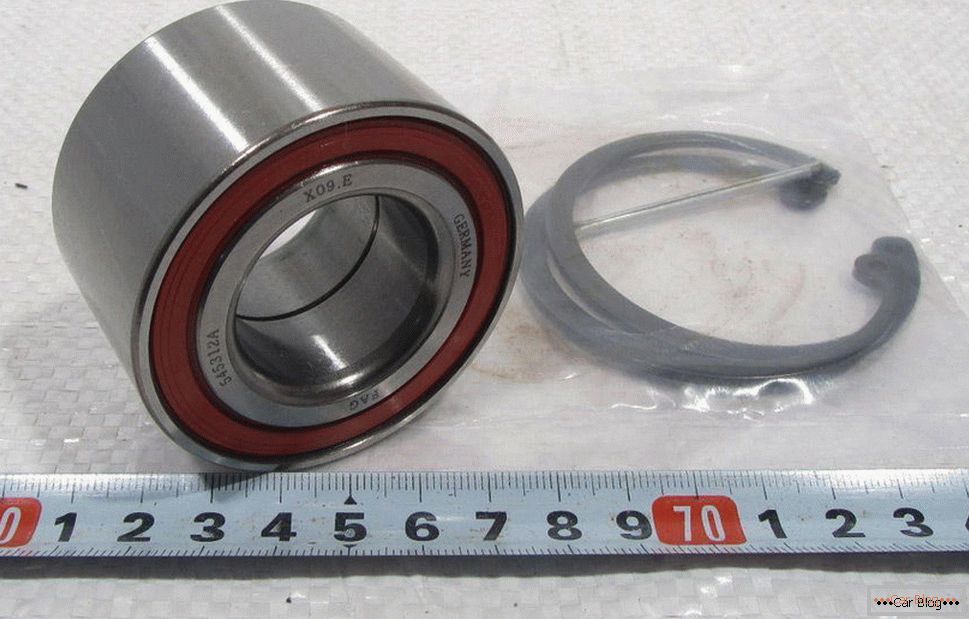
What lubricants can not be used?
First of all, I must say that not every lubricant will be a good option for reducing friction of wheel bearings. This is due to the special conditions of operation of such a node - it moves at a very high speed and heats up to a high temperature. It is the latter circumstance that is the reason for the rejection of lubricants based on synthetic hydrocarbons - they begin to break down when heated to 45–60 degrees. This group includes silicone and petrolatum compounds, which are widely represented on the Russian market. Every motorist should remember that hydrocarbon lubricants are conservation and are not suitable for the treatment of such high-loaded parts as wheel bearings.
Читать далее о лучших вариантах смазки для ступичных подшипников-->Также лучше не приобретать смазку на графитовой основе, поскольку она содержит достаточно большое число абразивных частиц, приводящих к ускоренному износу корпуса подшипника. Графитовые смазки применяются для обработки малоподвижных соединений либо для защиты от коррозии креплений рессор. При набивке такого средства в ступичные подшипники ремонт ходовой части предстоит делать уже через 25–30 тысяч километров, хотя номинальный срок службы таких деталей достигает 100–120 тысяч километров.
The grease based on calcium or sodium is also capable of quickly destroying hub bearings. Such tools can effectively deal with friction, but they cannot prevent the spread of corrosion. However, wheel bearings are operated in very difficult conditions, so they can quickly fail without adequate protection. It is also worth refusing to use greases with iron and zinc, even if they are intended specifically for bearings - most likely, such tools must be used in industrial equipment.
Best tools
Based on molybdenum disulfide
One of the best means of protecting hub bearings from destruction is a lubricant containing a large amount of molybdenum disulfide. This metal salt can significantly reduce the friction force, reducing the rate of wear of the entire assembly. In addition, lubricants made using this technology can stop the spread of corrosion due to the formation of a very dense, indestructible film on the surface of the treated part. The service life of the lubricant is equal to the service life of the wheel bearings themselves - more than 100 thousand kilometers, therefore, with proper installation of the part, there will be no problems with the running gear.

Of course, even such a high-tech lubricant can not do without certain disadvantages - in the first place, they are presented by sensitivity to moisture. If the hub body is depressurized, it is better to change the lubricant, carefully checking the condition of the bearing, which can be subject to irreversible damage. In addition, molybdenum disulfide-based lubricants quickly become contaminated, and when abrasive particles appear in them, the effectiveness of the fight against friction significantly decreases.
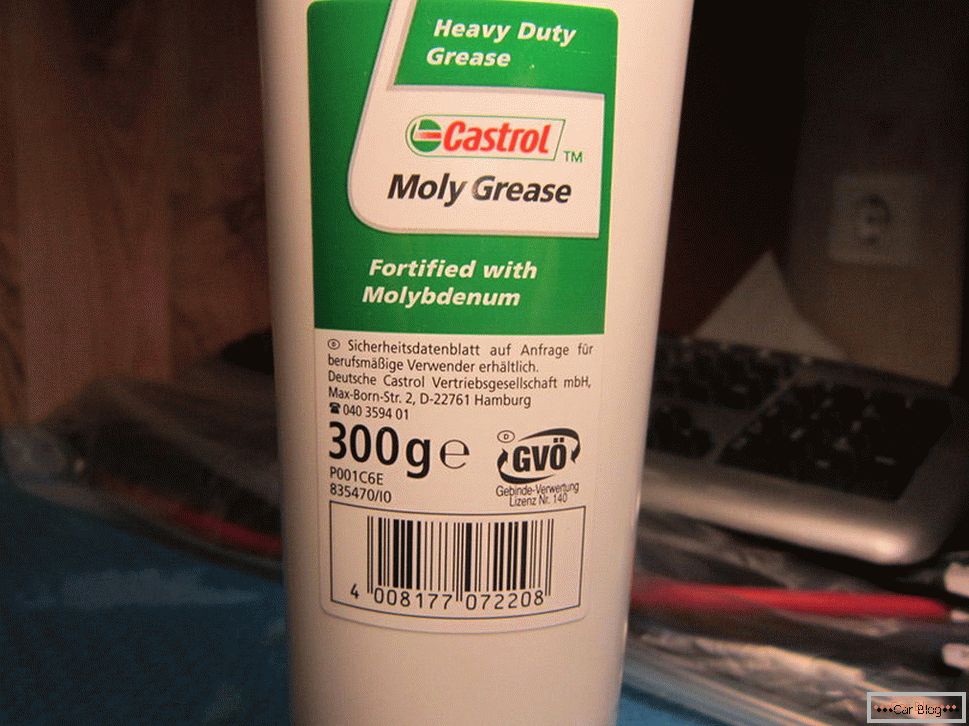
The lubricant created using molybdenum disulfide can also be destroyed at particularly high temperatures, although for it these indicators are much higher than for the previously mentioned hydrocarbon synthetic means. Therefore, after a long drive at high speed, it is advisable to regularly flip the covers of the bearing housings to check their condition - the first indicator of their excessive wear will be a bluish color, after which the broken part will begin to show a strong hum. For the treatment of hub bearings, you can use a lubricant of domestic production, for example, Fiol, and in the absence of it, you can buy a more expensive means of CV JOINT-4, although it will slightly reduce the service life of the node. If you prefer to use lubricants of foreign manufacturers, pay special attention to the following brands:
- Texaco;
- Castrol (BP);
- IT;
- Liqui Moly;
- Car.

 Discounts for new cars! Profitable loan from 9.9% installments 0%
Discounts for new cars! Profitable loan from 9.9% installments 0%  adom.ru
adom.ru
Based on lithium
For a long time, universal grease was developed, based on lithium dissolved in organic acids. When foaming and adding a thickener, a yellowish substance is obtained, which is easily scooped with a finger or a special tool, but does not spill out of the can itself. Lithium greases are considered ideal for dealing with friction - they provide a significant reduction in loads, which leads to a decrease in the rate of wear of individual parts. Due to this, the service life of the bearing when processing this composition increases to a maximum, which allows you to gain confidence in the reliability of the undercarriage of the car. The durability also applies to the strengths of lithium-based products - the lubricant does not lose its properties and to 100–110 thousand kilometers, although for the sake of safety it is better to replace the part.

Because of this, lithium greases are considered ideal for bearing safety, although in some other areas the result is not as good. The disadvantage of these products is the average corrosion resistance compared to alternative compositions, therefore, in case of leakage of the bearing housings, the lubricant should also be changed. In addition, the minus is the ability of organic acids in the basis of lithium greases to dissolve some polymeric compounds. Therefore, before acquiring such funds, pay attention to the instruction manual of the car - it is quite possible that in it you will find an indication of the inadmissibility of their use.

Now lithium-based lubricant is produced by only a few foreign companies, among which British Petroleum is called, Very Lube and Renolit. However, you can use to protect wheel bearings and a relatively inexpensive domestic equivalent, represented by a tool called Litol-24. Unlike other compounds, Litol copes well with increased loads and high temperatures, ensuring maximum durability of parts. In addition to high durability and low prices, the prevalence of domestic lubricants can be called a widespread use - it can be purchased at any automotive or construction store.
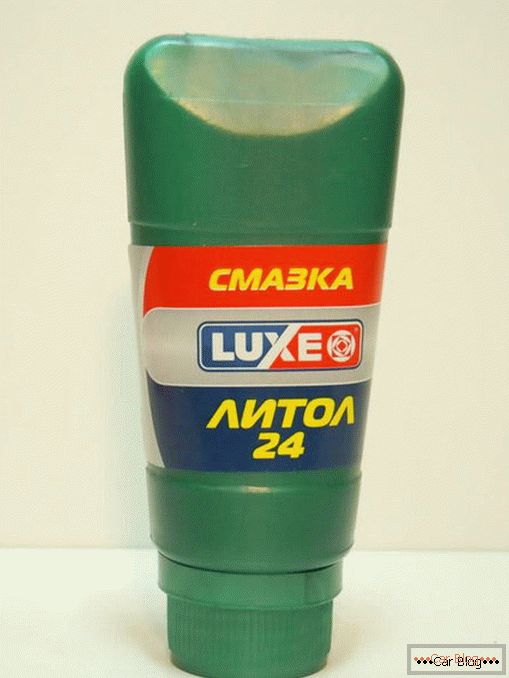
How to lubricate the wheel bearing?
To apply grease to the wheel bearing, you must first get to it. Before disassembling, place the car on a flat surface and fix it in order to prevent accidental movement. Before removing the wheel, do not forget to loosen the hub bolt by turning it counterclockwise - if you forget to do this, you will have to spend a lot of extra time. When the bolt is loosened, lift the car on the jack and carefully dismantle the wheel, taking care not to tear the threads of its bolts.
Carefully loosen the brake caliper mounting bolts and, holding the pads with your hands, remove this part from the wheel hub. To get to the bearings, you may also need to dismantle the ball bearing and the rack — in doing so, you need to unscrew the 2–4 bolts that hold such components and carefully set them aside, avoiding strong shocks and vibrations. In some cases, you have to knock out the axle shaft - having put a wooden lining or a wide metal mandrel on it, apply a few light strokes and then pull the edge of the hub with your hands.
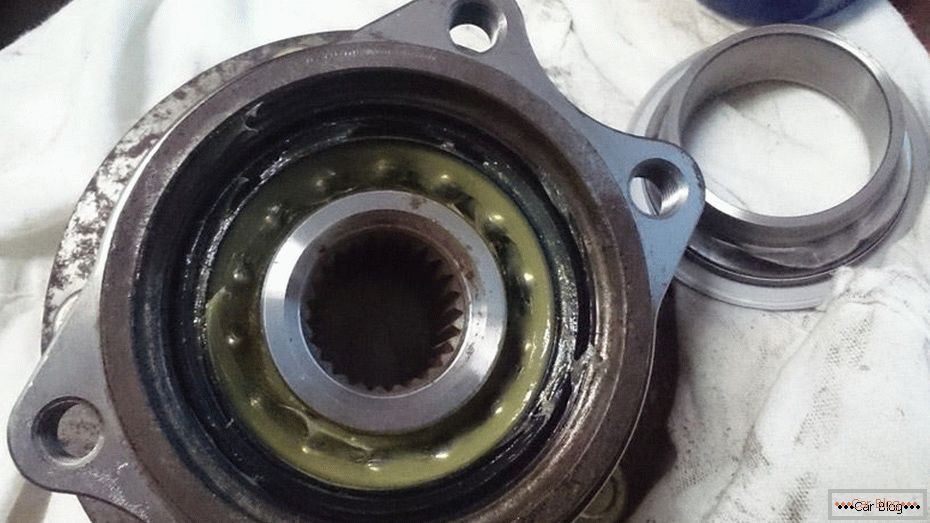
You also have to disassemble the hub itself - this is also done with the help of wide metal mandrels, although here the blows may already be somewhat stronger. Reaching the bearing, knock it out using a smaller size mandrel - be careful not to damage the hub housing. Pay attention that the wheel bearing consists of two asymmetrical parts - remember their position in order to subsequently assemble the assembly correctly. Having gotten the old parts of the bearing, check that there are no fallen balls left in the hub, as well as old grease - to do this, you will need to rinse the cavity with gasoline and then wipe thoroughly with large paper napkins.
Wheel bearings are usually lubricated by hand - special tools are used extremely rarely. In total, you will need to fill approximately 30–40 grams of thick material in one piece, carefully compacting it and observing the uniformity of application. Alternately install the two parts of the bearing, simultaneously lubricating them with a lack of gaskets. To significantly speed up the process and not damage the plastic protective cover of the part, use the old bearing instead of the mandrel and hit it with a hammer. Assemble the hub in the reverse order.
Maximum reliability of the chassis
To decide which lubricant is the best option for protecting wheel bearings, be sure to pay attention to reading the vehicle's instruction manual. As a rule, the manufacturer indicates the type of composition that is approved for use or even a specific product name. If there is no such indication, lithium grease can be used, which provides excellent protection against accelerated wear and corrosion. The domestic composition of Litol-24 and foreign counterparts have almost the same efficiency of use, so you can ignore the brand when buying. In addition, an alternative option is molybdenum disulfide-based lubricant, although it is not so resistant to moisture and has some other features.

